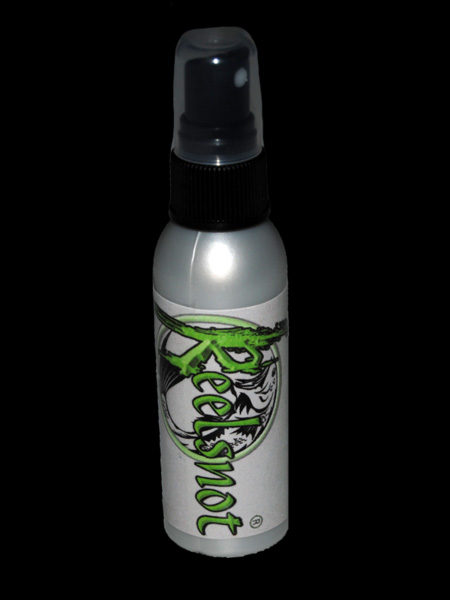Cuda Tools Fillet Knives
A recent trip to Florida gave us the chance to do some hands-on testing with a variety of new gear, and since we brought a few fish back to the dock, that included Cuda Tools fillet knives. And we’re going to stake a very simple claim: these knives not only work well, they will hold up in the long run. How can we make this assertion, after a few days of use? Simple—this trip to Crystal River was the second annual event that Cuda Tools participated in. Our Angler in Chief Lenny Rudow was there last year, too, and at that time Cuda sent him home with a nine-inch Titanium Bonded knife. (The less expensive version of the two knives seen in the video). Now, have a look at these pictures.

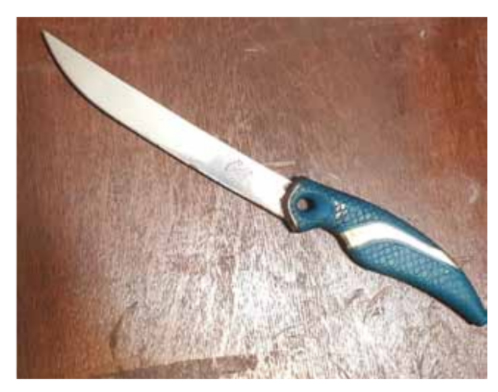
"What you see at the top is a worst-case scenario," said Rudow. "In May I put this knife on my boat. I not only used it to fillet fish, I also used it for chopping chunks while chumming and chunking. It was out in the Atlantic and used while bailing for mahi-mahi. It saw action on the Chesapeake dozens of times. And through all of that, I was very careful to be rather abusive. I didn't rinse it unless I was about to fillet fish for food. I didn't scrub it down after hacking through piles of bunker. I didn't dry it off. And I left it sitting exposed in a knife-holder on my boat, instead of putting it away. Then in late December when I pulled the boat, I left the knife sitting there. I didn't touch it until today, and that’s what it looked like. Now, look at the picture below. That’s the same knife after a five-minute clean-up with hot water, some Dawn, and a scouring pad."
As you can see, the knife cleaned up exceptionally well. There are a few bits of rust remaining where it was tough to scrub with the pad around the handle, and a few flecks on the edge, but overall considering how this knife looked prior to clean-up it's a rather amazing recovery. The bottom line? We have no problem giving these knives a big, fat thumbs-up. "If I can be this abusive to any piece of gear and it survives, I'm impressed," Rudow said. "I'm even more impressed that this was the case with their least expensive type of knife. It costs just a hair over $20. Yep, this one's a thumbs-up for sure."
For more information visit Cuda.
Furuno DFF-3D
Furuno has joined the world of side-finders and 3-D fishfinding, with the new triple-beam DFF-3D. This black-box sounder and its dedicated (1’2” transducer) hitches up to Navnet TZTouch and TZTouch2 systems. It also has range capabilities that go far beyond what we’ve come to expect from side and 3-D finders, maxing-out at 650’ to the sides and 1,000’ straight down. How can Furuno gain this extra distance? The frequency it pings at is significantly lower than the competitors, at 165 kHz (other systems like this utilize frequencies ranging from about 300 kHz to 800 kHz). The lower frequency means the system “sees” with slightly less detail than those higher-frequency options, but this is the price you pay to maximize range—and if you’re more interested in seeing denizens of the depths than you are in marking silversides in the shallows, it’s a trade you’ll be happy to make. Price: $2,095. Check out Furuno for the specifics. Editor’s note: at the time this is being printed the DFF-3D isn’t yet on the market (the one we saw at the Miami International Boat Show was a prototype) but it’s expected to hit the streets within the coming months.
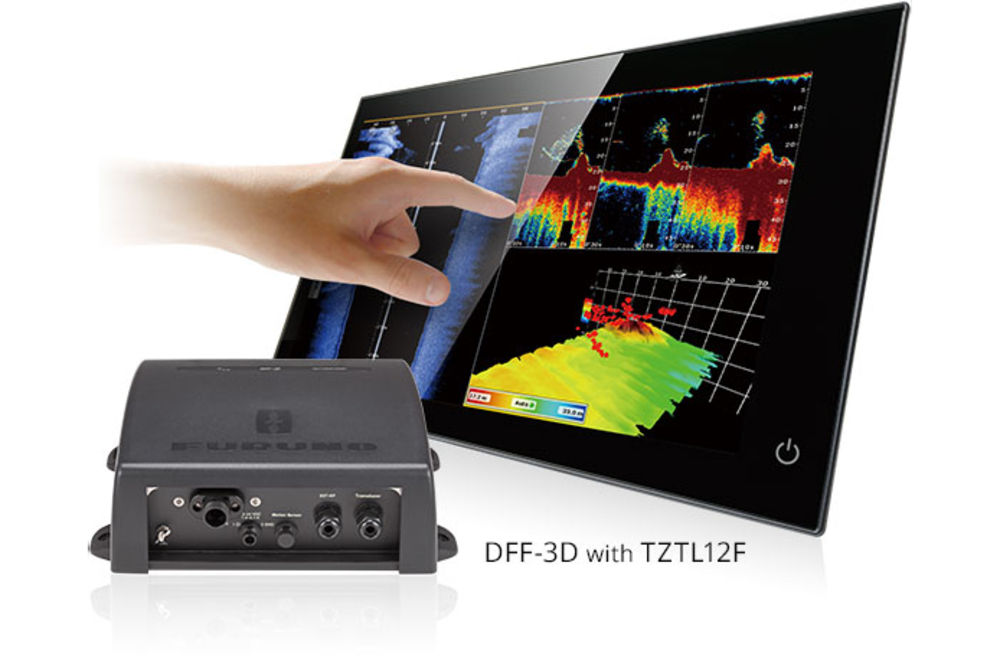
Stash Cooler
In the World’s Most Unusual Cooler category, we have the new Stash. When West Marine told us they were going to (exclusively) carry the Stash and asked us to test one out, we had no idea what we were in for—the Stash is actually a sort of RIB-style inflatable cooler. It has a semi-rigid bottom and sides that inflate with a (included) hand pump, which means you can deflate it when not in use. We found it fast and easy to inflate (in under 30 seconds), it held ice as well as your average Igloo or Coleman, and its thick vinyl walls are tough enough to stand up to fish parts—with the possible exception of swordfish, which we didn’t have the opportunity to test with… not that we’re about to press our luck that far, anyway. Available in sizes ranging from 75 quarts to a coffin-sized seven-foot 600 quart capacity, the cooler also has polyurethane feet with tie-downs, stainless-steel D-ring tie-downs, hefty reinforced carry handles, and screened drains.

One down-side we discovered is that the cooler isn’t rigid enough on the top to use as a seat, which is often the de-facto secondary purpose of a large cooler. And this begs the question: why in the world would an angler want an inflatable cooler in the first place? The big perk here is that you can stow a tuna-sized cooler in a trout-sized compartment. Many boats that are capable of making an offshore run don’t have fishboxes big enough for fish like a beefy bluefin, nor the extra deck space you need to haul a rigid cooler that can do this job. Collapsible fish bags are the usual answer but many don’t hold ice well and few can chill multiple large fish. The Stash is an innovative way to solve these problem. And as a bonus, you have a rather huge cooler you can also use on dry land yet still stow in a small space at home. Apartment dwellers, for example, will really appreciate the ability to deflate the Stash and tuck it under a couch or in a closet. Cost ranges ($399 - $999) depending on size; visit West Marine for more info.
St. Croix Mojo Jig
Speed jiggers who are fans of St. Croix rods will want to make sure they check out the Mojo Jig, a line of rods introduced for 2017 that are designed to handle the serious stress dished out by big game hitched to heavy braids. With four conventional and four spinning rods in the Mojo line (5’8” and 6’6” medium to extra-heavy weights), there are models appropriate for braids from 30 to 200 pound test. They’re built for life in the brine, with SCII graphite blanks, SS304 guide frames and aluminum-oxide inserts, EVA handles, and Fuji reel seats. Price: $200. Many of the tackle shops in our region have the Mojos, so visit one and feel it for yourself or go to St. Croix to learn more details.

Fusion StereoActive
Has there ever been a small boat stereo designed to withstand the rigors of trot-lining? One that can survive being dripped on, dropped on, and smacked by muddy chicken necks as they swing from their snoods? We don’t think so, and we’re pretty sure this kind of abuse wasn’t what Fusion had in mind when they sent us a StereoActive to try out. But after several torture-test trips on our crabbing skiff the Fusion is none the worse for wear (though we’ve been told it now smells kinda funky). So if you wish you could add a seriously rugged and kick-a** stereo to your skiff, kayak, or paddleboard, we think you should check this unit out.
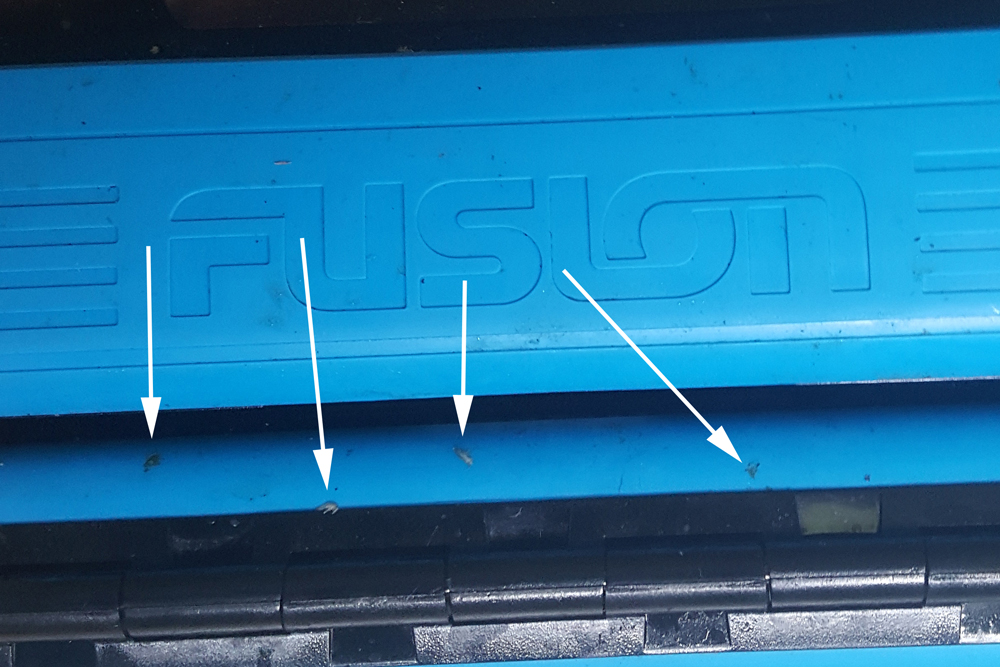
The 40-watt waterproof (to IPX7 standards) StereoActive floats, attaches to an easy-to-install puck mounting system, takes your musical feed from radio, BlueTooth or a USB, and has an internal lithium-ion battery that jams tunes for up to 20 hours between recharges. Kayakers and paddlers will love the oversized buttons, which line the top of the unit and are scalloped so you can press them with the end of your paddle. We found that the end of a crab net works just fine on those big buttons, too, though we missed a Jimmy while turning up the volume—D’oh! Add the water-tight ActiveSafe, which clips onto the same puck mount under the StereoActive, and you can keep your phone or iPod dry and safe, too.
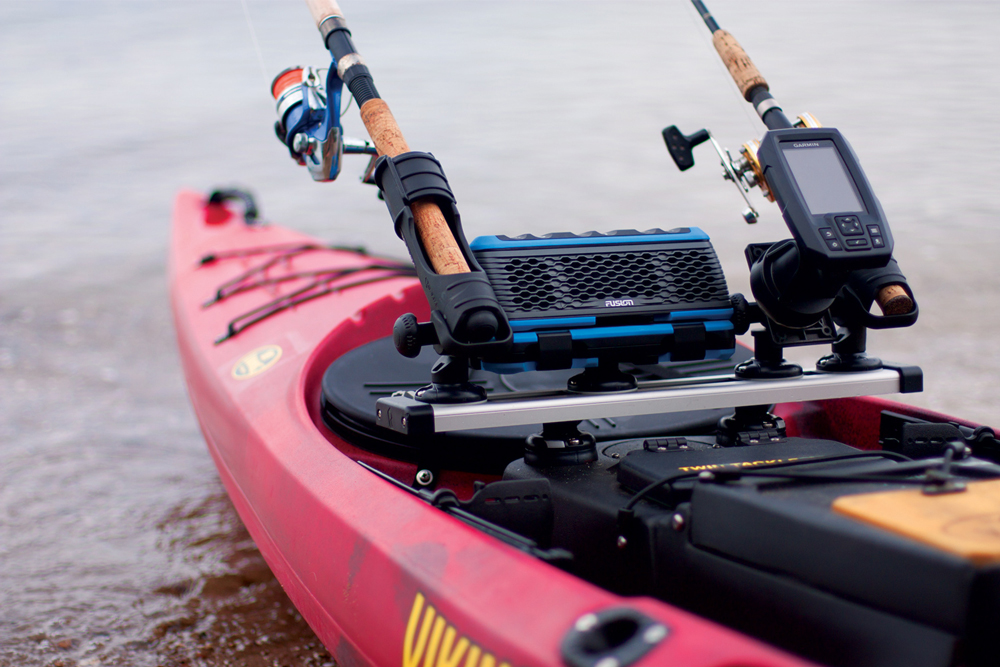
To our ears sound quality is as good as it gets for self-contained stereos like this, and while the volume doesn’t quite attain ear-splitting levels, it was loud enough that we felt it necessary to turn down a bit when some people on a dock about 100 yards away seemed to stare. The unit is a bit pricy with a $299 MSRP, but as is often the case, you get what you pay for. Visit Fusion to learn more.
Siren Marine MTC
Boat owners who place a premium on security may want to check out Siren Marine’s new MTC monitoring and tracking system. With a base station that communicates via 3G and remote monitors, when something happens aboard your boat you’ll be alerted on your cell phone via the Siren app. GPS tracking is part of the deal, and monitors offer options and alarms for things like unauthorized entry, bilge water level, battery voltage level, and more. The system also gives you the ability to remotely control systems like an audible alarm, lights, and air conditioning on the Siren app.
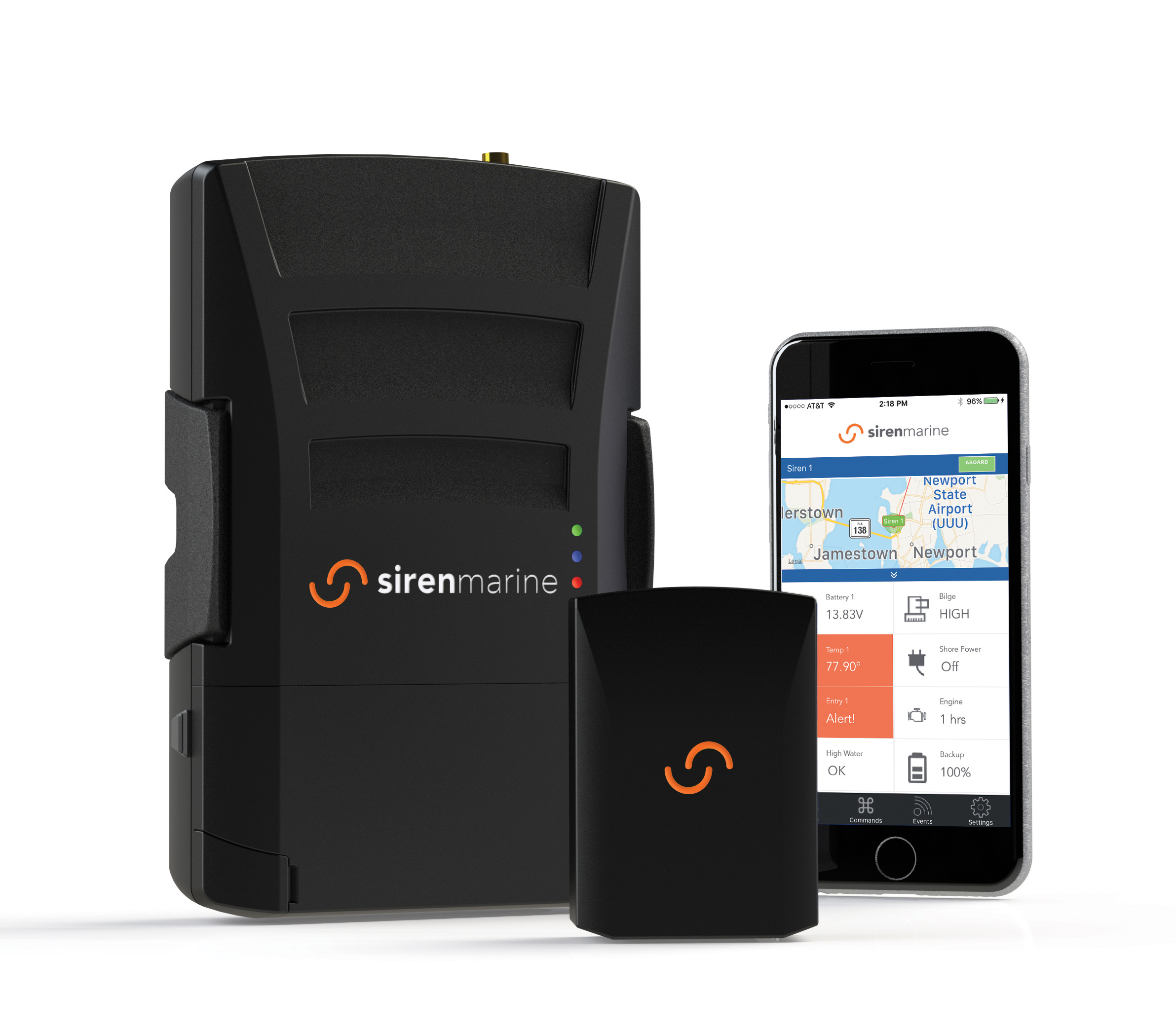
We had a Siren rep visit us and demo the system during a day on the bay, and felt it will be of particular interest to boat owners who leave their pride and joy in a slip but live relatively far from the marina. They always have a little voice in the back of their head whispering about leaks and pump failures, and the Siren silences that voice. Think of it like Nest for your boat. Cost is $599. Visit Siren for more information.
Weego 66
Unless you’ve been living in a cave (in which case we sort of envy you) you’ve certainly heard about the new mini jump-starters that have hit the market in the past few years. Small enough to stow in the glovebox or a console compartment, these things have saved a lot of fishing trips that would otherwise have been lost to dead batteries. The one problem? You need a huge amount of power to jump start a diesel or a very large gasoline inboard, so up until now the utility of these jumpers has been limited by the size of your engine. That’s why Weego rolled out the new Jump Starter 66, which can handle gasoline engines up to 10.0L and diesels up to 5.0L. It also has the add-ons found on other Weegos, like a flashlight, USB charger for cell phones and gadgets, and a 12-V port. Water/dust resistance is IP65 rated, the 66 is good for up to 1,000 charge/discharge cycles, starting/peak current is 300A/600A, recharge time is three hours, and the battery itself is a lithium-polymer. Price: $199. Visit Weego for more info.
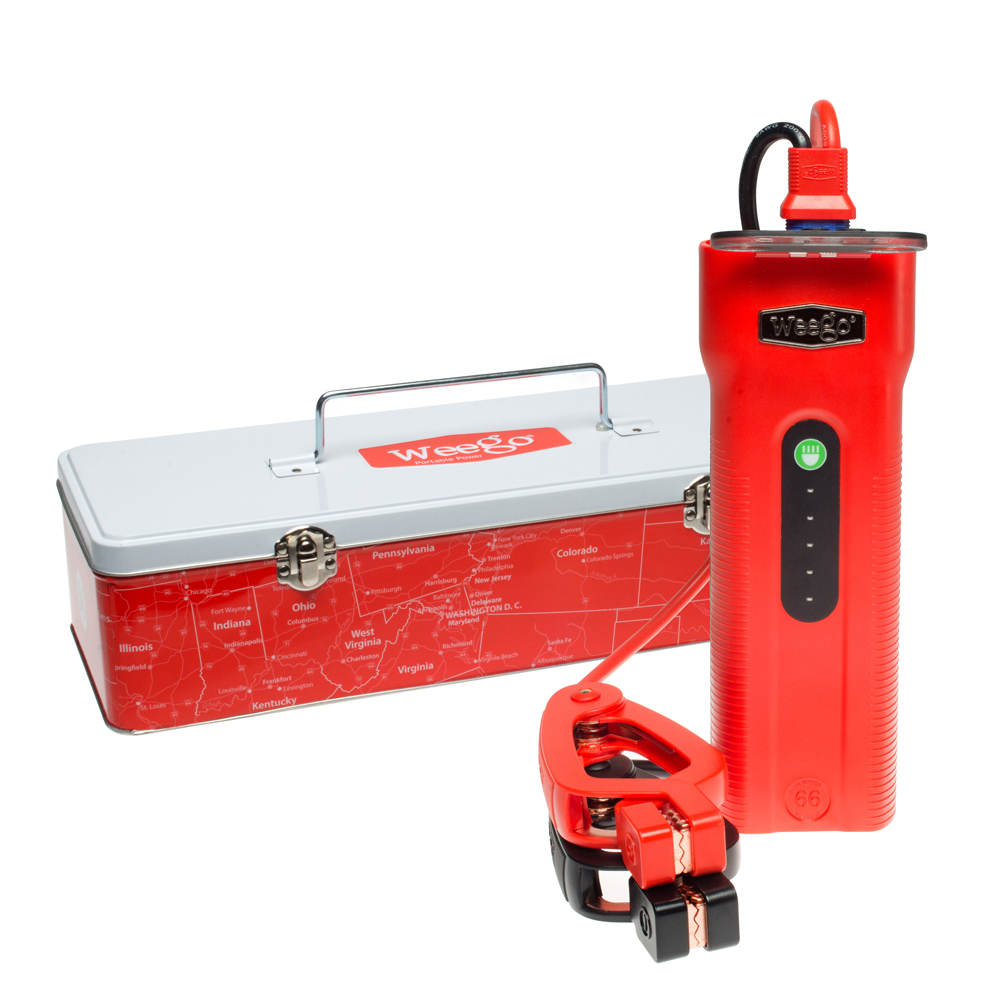
Okuma Azores Spinning Reel
While on a recent trip to Crystal River, Florida we had the chance to extensively test an Okuma Azores Z80 S fishing reel. And by using the word "extensive," we mean we caught the heck out of fish with these reels—ranging from grouper to snapper to cobia to amberjack. You can check out the action, in a short video on our web site (just go to the Gear section, and click on the Okume Azores review). Meanwhile, however, we can assure you that the Azores stood up to the pressure of some seriously beefy fish without a problem. We were spooled up with 30 pound braid, which meant we were putting plenty of heat on those fish, too. The drags felt smooth when those fish ran, and we didn't detect any obvious flaws with the Azores Z80 S. What about this reel's longevity? Since we only had these reels in-hand for three days of fishing, we simply can't speak to it. However, Okuma does cover the Azores with a one year warranty.
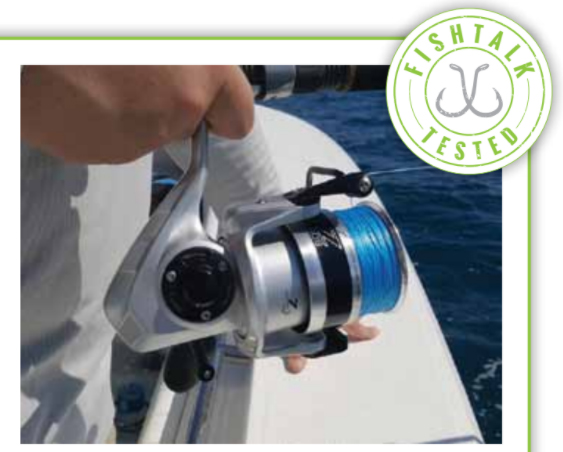
The Azores series is available in five sizes, rated for lines ranging from eight pound mono up to 80 pound braid. On the Z80 S in specific (the second-largest model) you get a line capacity of 300 yards of 65 pound braid. This model puts out a maximum drag pressure of 44 pounds, and with a 5.4:1 gear ratio, brings in 46 inches of line with each crank. Weight is 25.5 ounces.
Okuma Azores reels incorporate a number of features. The one that impressed us the most? Again, think back to how smooth that drag was. This is because Okuma uses a "DFD" drag that takes advantage of both surfaces of the spool, to maximize high-end drag pressure yet retain smoothness. The top of the spool has a multi-disc felt drag system, and it works in conjunction with the secondary drag system mounted under the spool. Most spinning reels have a single drag. Another interesting feature on this reel is the machine-cut aluminum handle. Unlike some reels, we didn't notice one iota of flex in it while fighting the fish. The reel's body, side-plate, and rotor are also aluminum (die-cast), and the spool has a knurled band on the arbor to prevent braid from slipping around it—a common problem on some reels.
And now, for the question everyone's been waiting for: just how much does one of these reels cost? We actually think pricing on them is quite good, because depending on size, you'll see them anywhere from just over $100 to the $150-ish range. Visit Okuma for more info.
Fell Marine MOB +
Okay people, tell the truth: how many of you really clip on the kill-switch lanyard every time you pull away from the dock? Yeah, that’s what we thought—almost no one uses this important safety feature, especially since being physically linked to the chord is restrictive. That’s why Fell Marine invented the MOB +, a wireless kill switch that doesn’t tie you down to the helm. Installing the Basepack at the helm only took a couple of hours (the hardest part was figuring out which wires to hook up with the ignition, but the online user manual has a pretty good description of how to tell what’s what), and required drilling one hole for mounting.

Once it’s in place, you put on a wrist band or a Fob you can wear on a lanyard to establish the wireless link. The MOB + gives you complete flexibility to move around the boat, but if you fall overboard the engine cuts out at a distance of 50 feet. We installed it in a small boat which is often used single-handed. As you might guess, this is exactly when having a kill-switch is imperative—and it’s also when using the standard lanyard can be overly-restrictive, as you may need to dart up to the bow to grab gear or secure an escaping crab from the bushel basket.
While we can’t claim to have jumped overboard to give it a test, a short walk down the dock verified the effectiveness of the MOB +. Final judgment: any boater will enjoy the added safety margin, but especially if you use your boat single-handed, it’s a serious winner. Cost is $199. Visit Fell Marine to learn more.
Boomerang Retractable Fly Box
The fly guys among us will be interested in the Boomerang Retractable Fly Box, which attaches to a clip-on two-foot retractable Kevlar tether so it’s always close at hand. The two-sided box is waterproof, is said to hold up to 85 flies on each side (though we’re thinking that’s a stretch) and includes a rather shocking lifetime service policy on the gear tether (which is made in the USA). While the longevity of the plastic box remains a bit of a question-mark, we’ve used Boomerang tethers before and these things are well-built and long-lasting. This model claims a four-ounce retraction force. Cost is around $20, and you can check it out at Boomerang.
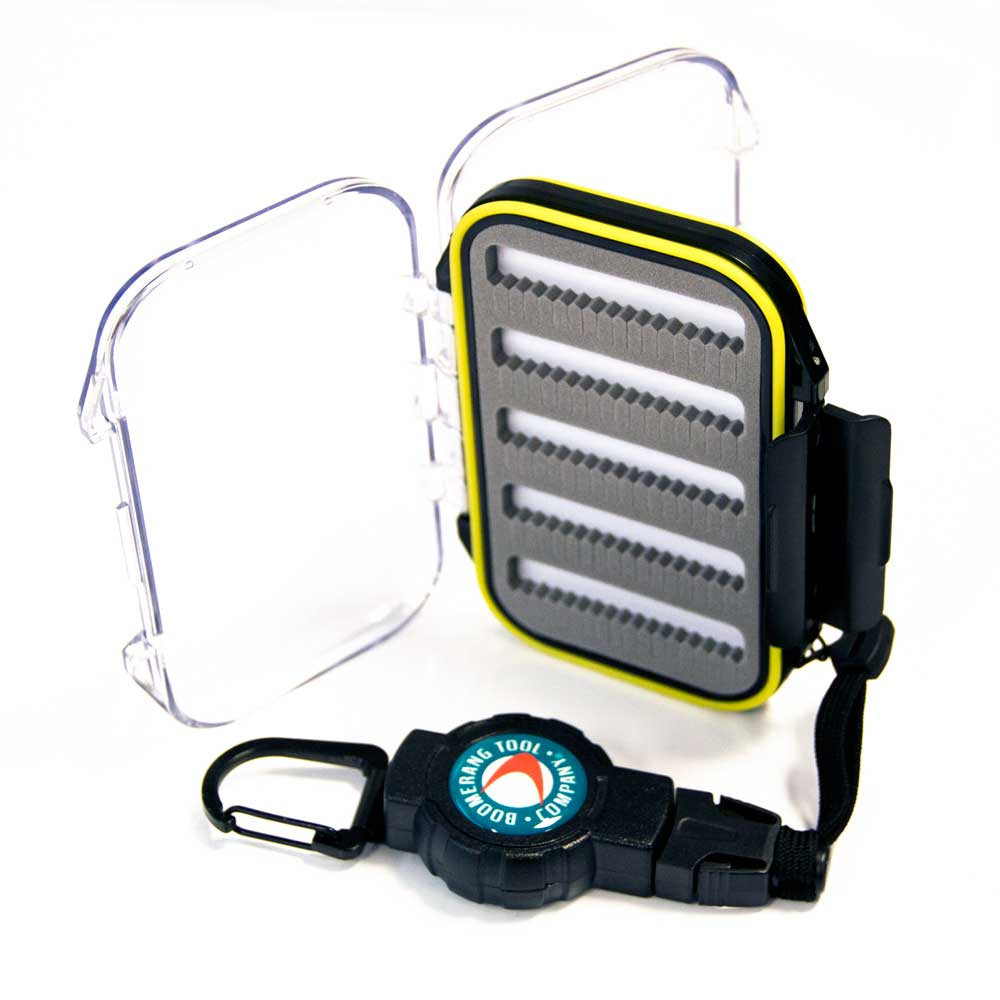
Reel Snot
Yes, this stuff is really called “snot”. It’s a spray-on line lubricant and conditioner, which is formulated to reduce monofilament line memory, improve knot-ability, and help de-ice lines and guides. It comes in two flavors, regular Reel Snot and “coffee infused” Java. While stipulating right up front that we couldn’t test its de-icing abilities since winter has passed—and we weren’t about to travel to the Arctic for a gear review—we did find that this stuff helps get rid of memory (after a few casts) in mono that’s been on a reel for too long. What about assisting with knots? It does provide lubrication, but then so does the old stand-by, a little bit of spit. Reel Snot doesn’t seem to have any odor or coloration, and when sprayed on has just about the same consistency as spit. The bottom line? If you fish with a lot of mono or your mono-filled reels tend to sit for a while and memory is an issue, this stuff does come in handy. Braid-only anglers need not apply. Cost: $10; visit Reel Snot for more info.
